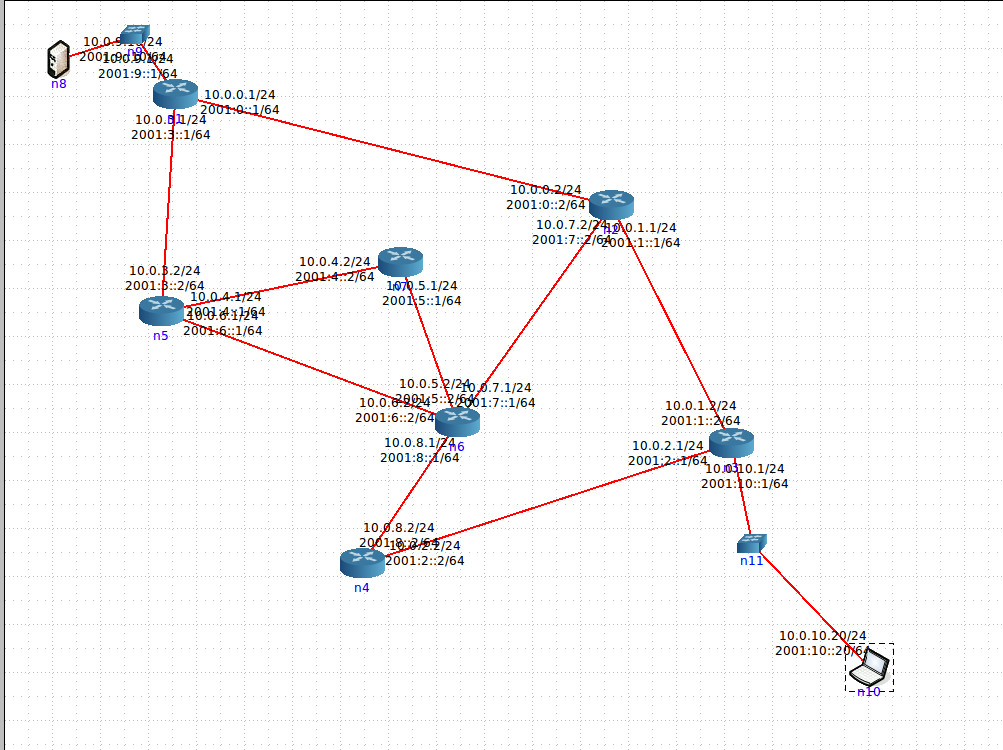Overview
Following on from Evaluating Network Simulation Tools that outlined my requirements for a network simulation tool. I will have a look at the Common Open Research Emulator or CORE as I will refer to it from now on. This is not a review as such as I am assessing against my criteria. I am also new to network simulation so I do not have knowledge of other packages to compare it against. It should, however still be useful if you want to learn a bit more about the software and its capabilities.
CORE is a tool for emulating networks which comes out of the US Navy Research Laboratory and was developed for them by Boeing Research and Technology division. It seems to be a fairly reliable pedigree to me and fits in with my own military background and research slant. The website for CORE can be found here.
The website is quite clear and includes some demonstrations of what can be done in a movie format. In looking at these I could see immediately that CORE would be interesting to me. It shows a MANET network being created very quickly and visually and also shows making a connection to real world devices. This is starting to tick my boxes.
CORE is designed for Linux or BSD and makes use of many open source tools to deliver it functionality. In many ways it is just a frontend to what you could do the hard way at the Linux command line. This makes the tool enormously flexible. If you run Linux then this will be really simple to begin to use.
The documentation seems good and the installation process is well covered. If you are familiar with Linux then installing is simple. It covers some of the prerequisites that will be needed for the tool. It does miss out on some that could be seen as optional but when you come to try a tool in the menus later you can be left scratching your head as it does not indicate it requires the installation of something. Once discovered then it is a quick step in your package manager to install it, but a little more indication would have been better. I will cover some that I have discovered later.
This is the first in a series of articles about Network Simulation tools. I am investigating them to support some research and as such have my own specific requirements. I thought I would share my requirements and ideas about tools and hope for feedback or that perhaps it is useful to others.
I am stuck in limbo at the moment. I have applied to begin a PhD course at the Finnish National Defence University and have had my topic approved by the professor. I am waiting for confirmation and security clearance to come through which could take a few months.
In the meantime I am itching to get started. I do not want to give away the full title of my research topic at the moment until it is confirmed. Suffice to say that it will be looking at military tactical communications and involve IP networks particularly Mobile Adhoc Networks (MANET).
When I start my studies I somehow doubt I will manage to get a manoeuvre Brigade at my disposal to test out anything I can come up with. Therefore I will need to model and simulate the network layer in sufficient detail and fidelity that any new protocols can be tested and adapted. The tactical network is a very demanding space for IP communications. It is typified by low throughput, high latency, jitter and network breakage. Any simulated network will have to be able to be configured to produce the same effect.
The simulation environment is a necessary prerequisite to my central research but separate from it. So since I need to document it anyway I thought I might as well blog it. My look at network simulation tools in the tactical space may be useful to others or more likely people can give me feedback on other useful tools or their thoughts on the tools I have already found. So I begin a series of blogs with one that shows my requirements and thoughts on what I need in a network simulation. Having set the scene the next few blogs will be looking at some of the possible tools individually.




